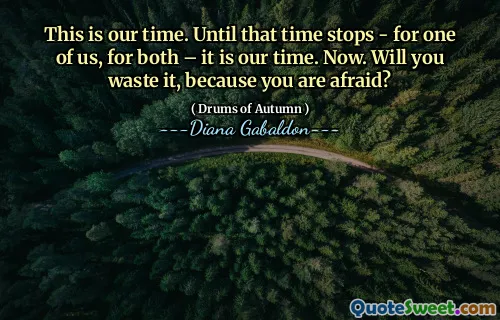
It had occurred to me briefly to wonder why he had worn his kilt this morning, instead of changing to breeks; the crimson tartan might be quite literally a red flag to a bull, flaunted thus before an English soldier. Now I knew. They'd taken it from him once before, thinking to take with it pride and manhood. They had failed in that attempt, and he meant to underscore that failure, whether it was sense to do so or not. Sense had little to do with the sort of stubborn pride that could survive years of such insult-and while he had more than his share of both, I could see that pride was well in the ascendancy at present.
The character reflects on the meaning behind the choice of kilt over trousers that morning, recognizing that the vibrant red tartan might provoke an English soldier. This choice symbolizes a bold stance, as it connects to a past where his identity was challenged and stripped away. Wearing the kilt is not just a fashion statement; it represents defiance against attempts to diminish his pride and masculinity.
This decision highlights a deeply rooted stubbornness born from years of enduring humiliation. The character's pride, despite the circumstances, takes precedence over practicality, emphasizing the human spirit's resilience. He understands the significance of the kilt as a symbol of their heritage and an assertion of identity, even in the face of conflict.






